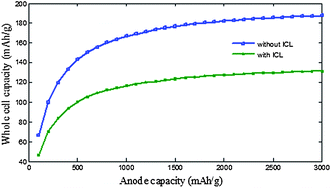Mitigating the initial capacity loss (ICL) problem in high-capacity lithium ion battery anode materials
Abstract
For lithium ion batteries, some non-carbonaceous anode materials have shown the possibility of increasing the capacity of current anode materials (which are almost universally carbon) by two to ten folds. One of the greatest challenges in the acceptance of these high capacity anode materials is their high initial capacity loss (ICL) problem. A large ICL is undesirable in practice because it consumes, irreversibly, a large amount of lithium ions from the more expensive cathode material. This perspective article will review the current progresses in the research on ICL especially the likely mitigation methods.

- This article is part of the themed collection: Advanced Materials for Lithium Batteries

 Please wait while we load your content...
Please wait while we load your content...